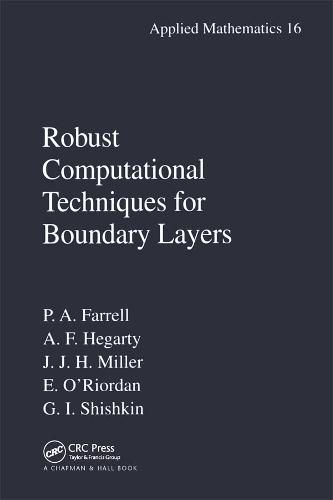Readings Newsletter
Become a Readings Member to make your shopping experience even easier.
Sign in or sign up for free!
You’re not far away from qualifying for FREE standard shipping within Australia
You’ve qualified for FREE standard shipping within Australia
The cart is loading…






Current standard numerical methods are of little use in solving mathematical problems involving boundary layers. In Robust Computational Techniques for Boundary Layers, the authors construct numerical methods for solving problems involving differential equations that have non-smooth solutions with singularities related to boundary layers. They present a new numerical technique that provides precise results in the boundary layer regions for the problems discussed in the book. They show that this technique can be adapted in a natural way to a real flow problem, and that it can be used to construct benchmark solutions for comparison with solutions found using other numerical techniques.
Focusing on robustness, simplicity, and wide applicability rather than on optimality, Robust Computational Techniques for Boundary Layers provides readers with an understanding of the underlying principles and the essential components needed for the construction of numerical methods for boundary layer problems. It explains the fundamental ideas through physical insight, model problems, and computational experiments and gives details of the linear solvers used in the computations so that readers can implement the methods and reproduce the numerical results.
$9.00 standard shipping within Australia
FREE standard shipping within Australia for orders over $100.00
Express & International shipping calculated at checkout
Current standard numerical methods are of little use in solving mathematical problems involving boundary layers. In Robust Computational Techniques for Boundary Layers, the authors construct numerical methods for solving problems involving differential equations that have non-smooth solutions with singularities related to boundary layers. They present a new numerical technique that provides precise results in the boundary layer regions for the problems discussed in the book. They show that this technique can be adapted in a natural way to a real flow problem, and that it can be used to construct benchmark solutions for comparison with solutions found using other numerical techniques.
Focusing on robustness, simplicity, and wide applicability rather than on optimality, Robust Computational Techniques for Boundary Layers provides readers with an understanding of the underlying principles and the essential components needed for the construction of numerical methods for boundary layer problems. It explains the fundamental ideas through physical insight, model problems, and computational experiments and gives details of the linear solvers used in the computations so that readers can implement the methods and reproduce the numerical results.